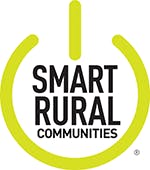Let’s Tell the Rest of the (Smart) Rural Story
If you read popular DC press, you might be concerned about the prospects for rural America. An article published this fall noted that rural America suffers from higher poverty rates, lower education rates, and disproportionate rates of early death, than urban areas. The article dug deeper and listed a series of chronic medical conditions such as obesity, mental health, cancer, and diabetes, that are more prevalent in rural areas than urban. And, it warned that jobs in rural America are more susceptible to replacement by artificial intelligence (AI) than jobs in urban areas.
At the outset, it is important to note that there is no silver bullet for rural America. Nor is there a silver bullet for urban cores that suffer from high rates of poverty, violent crime, and unemployment. Successful strategies must address head-on the challenges that both face. In contrast, those strategies contemplate silver buckshot — a menu of options to be tailored to the individual needs of each individual region or community. A popular phrase encapsulates the proposition that there is no single rural America: "If you’ve seen one rural area, you’ve seen one rural area." There is no uniform solution. But there can be a collective strategy.
Rural health care is difficult. Rural areas comprise about 25% of the US population, but are home to only about 10% of the nation’s physicians; there is a shortage of specialists, checking in at 70% fewer per 100,000 people in rural areas than urban. And, yet, telemedicine can conquer distance and disease. An NTCA paper, Anticipating Economic Returns of Rural Telehealth, found annual savings in lost wages, travel time, and hospital costs of nearly $30,000 per facility annually, and increased local lab and pharmacy revenues ranging from $11,000-$45,000, when telemedicine is deployed.
InvisiLight® Solution for Deploying Fiber
April 2, 2022Go to Market Faster. Speed up Network Deployment
April 2, 2022Episode 10: Fiber Optic Closure Specs Explained…
April 1, 2022Food for Thought from Our 2022 ICT Visionaries
April 1, 2022Educational attainment? We can point to data demonstrating that in 1950, 56% of rural adults lacked a high school diploma. In 2015, that number plummeted to 15%. At the same time, nearly 30% of rural adults now hold a bachelor’s degree or higher.
Job loss? No doubt, robots and AI will change the face of the job market — for both rural and urban communities alike. But middle skills and STEM jobs are increasing steadily, and programs in advanced manufacturing are sponsored in more than 30 states across the country. A 2018 World Economic Forum study, 2022 Skills Outlook, predicts that while AI will displace 75 million jobs worldwide by 2022, it will create 133 million new jobs — a net global gain whose trends can be expected to affect many sectors of the economy. And, there are some jobs that cannot be outsourced or automated. So, while educators and industry must create a game plan to meet the next generation of jobs, it means pivoting, rather than taking a knee.
Telling (Smart) Rural Stories
Vernon Communications Cooperative (Westby, Wisconsin) supports a grain storage facility of an international food-processing and commodities trading corporation which processes 5 to 6 million bushels of corn, soybeans, and soft red winter wheat, every year. Approximately 180-200 local farmers can spot sell, store, or contract, their grain. Cloud software maintains employee timecards, vehicle logbooks, and customer databases. Reliable broadband also enables farmers (and the company) to monitor fluctuating grain prices, communicate the daily closing bid with customers through text message or email, and maintain real-time communication with headquarters through video conferencing and private chat lines.
Rainbow Communications (Hiawatha, Kansas) demonstrates the unique complementary properties of various fixed and mobile broadband platforms. The company provides fixed fiber connectivity to Highland Community College, the oldest college in the state, enabling the college to offer numerous courses at various sites. These courses include CTE courses as well as training in precision agriculture, which relies upon mobile broadband applications, and diesel mechanics; similar to the complementary properties of fixed and mobile broadband services, both educational components are necessary as farms rely increasingly on traditional mechanical equipment as well as evolving analytical tech and mobile guided systems.
Webster-Calhoun Cooperative Telephone Association (Fort Dodge, Iowa) provides broadband that enables local high school students to earn college credits through distance education. Students can take up to 23 credits of college courses through a partnership with Iowa Central Community College.
And, one more piece of the puzzle: rural populations are indeed shifting; many rural spaces are becoming increasingly tied to expanding urban areas, while data indicate that remote rural regions face more formidable challenges. As noted above, there is no silver bullet. But the strategic menu should find rural communities exploring regional collaboration for everything from economic development to education. Chances are, regions are already coordinating to support health care and public safety infrastructure. Similar models can be explored for other applications.
Are there challenges in rural America? Yes, absolutely. But, resilience, determination, and perseverance, have never been far from rural minds.
And when blended with broadband, well, that can be the smartest thing yet.
Like this Article?
Subscribe to ISE magazine and start receiving your FREE monthly copy today!
Resources and Notes
Promoting Telehealth in Rural America. CG Docket No. 17-310. FCC 17-164. Comments of NTCA–The Rural Broadband Association. Before the Federal Communications Commission, Washington DC 20554. February 2, 2018. https://www.ntca.org/sites/default/files/federal-filing/2018-02/12.08.17%20Promoting%20Rural%20Health%20Care%2C%20DK%20No.17-310%2C%20Comments%2002.02.18.pdf
"Anticipating Economic Returns of Rural Telehealth" by Rick Schadelbauer, Manager, Economic Research and Analysis, NTCA–The Rural Broadband Association. March 2017. https://www.ntca.org/sites/default/files/documents/2017-12/SRC_whitepaper_anticipatingeconomicreturns.pdf. Smart Rural Community. www.ntca.org/smart.
2022 Skills Outlook. 2018 World Economic Forum study. Source: Future of Jobs Report 2018, World Economic Forum. http://reports.weforum.org/future-of-jobs-2018/shareable-infographics/?doing_wp_cron=1568310893.3959980010986328125000}
"Rural Broadband and the Next Generation of American Jobs" by Joshua Seidemann, Vice President of Policy, NTCA–The Rural Broadband Association. https://www.ntca.org/sites/default/files/documents/2019-04/SRC%20Middle%20Skills%20Web%20Version.pdf
Smart Rural Communities™ (SRC) is an initiative of NTCA that promotes rural broadband networks and applications that communities leverage to support innovative economic development, education, health care, efficient energy distribution and use, and other vital functions. For more information, please visit NTCA–The Rural Broadband Association at https://www.ntca.org/member-services/smart-rural-community/faqs.
"Steel Sharpens Steel: A Conversation About Regional Thinking For Rural America" by Joshua Seidemann, Editor, Vice President of Policy, NTCA–The Rural Broadband Association. https://www.ntca.org/sites/default/files/documents/2017-12/SRC_whitepaper_steele_sharpens_steel.pdf
About the Author

Joshua Seidemann
VP Policy and Industry Innovation
Joshua Seidemann is VP Policy, NTCA–The Rural Broadband Association. He has more than 20 years of experience in rural telecommunications and innovation research. For more information, please email [email protected] or visit www.ntca.org. Follow him on Twitter @josh_grok, NTCA on Twitter @NTCAconnect and NTCA on LinkedIn: company/ntca.






